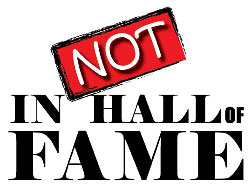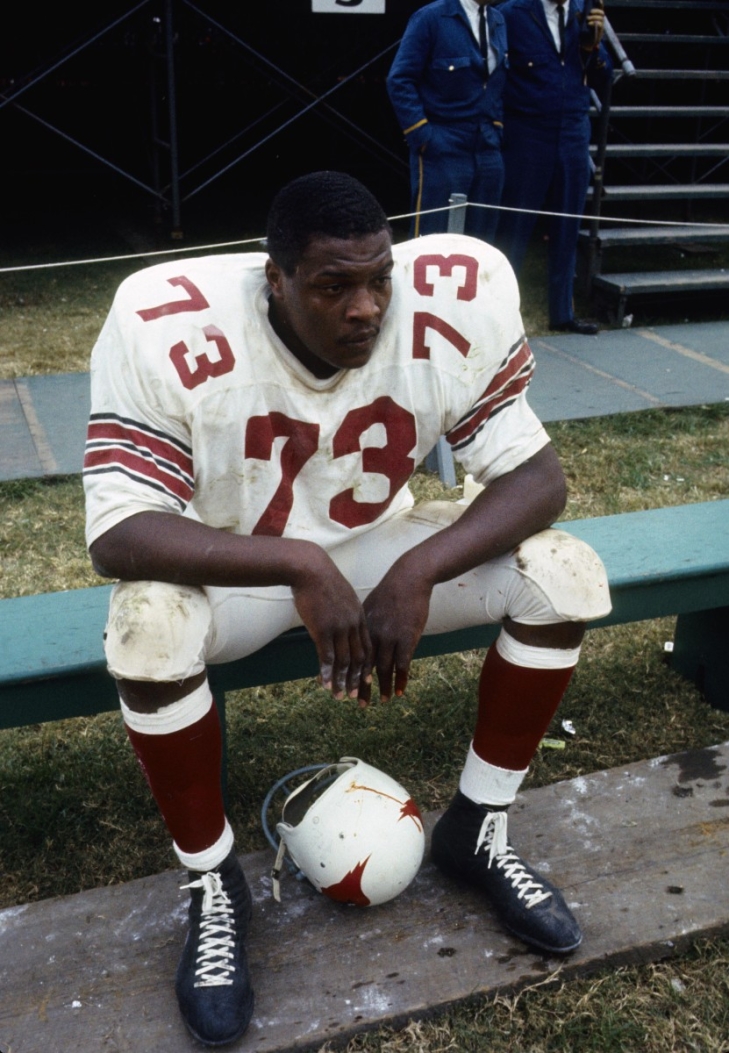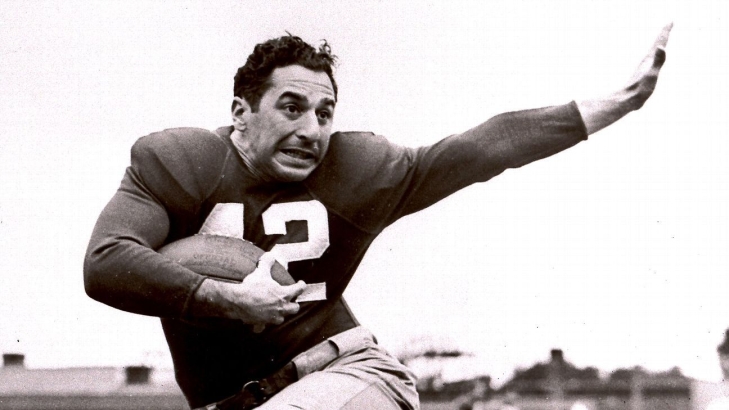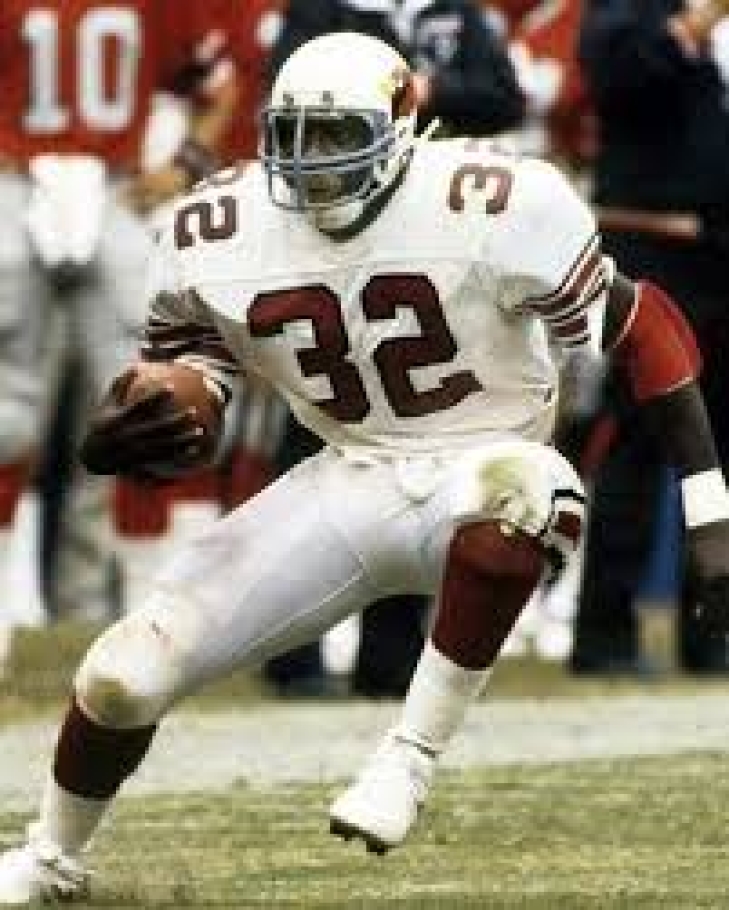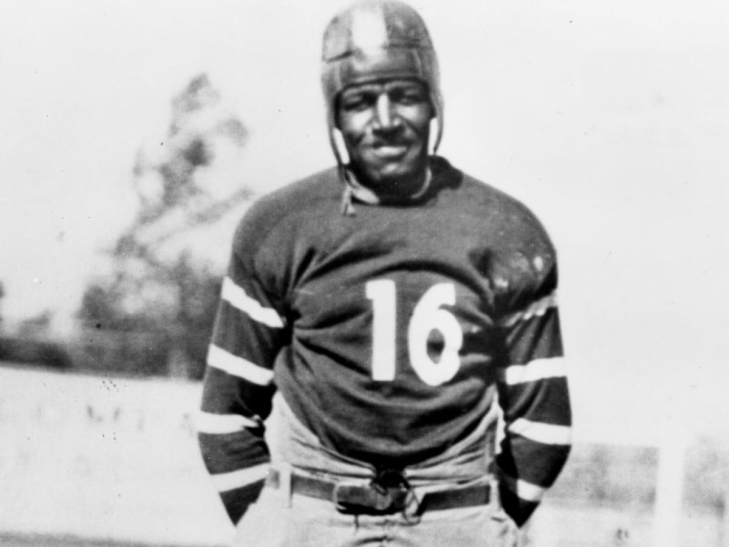
Committee Chairman
18. Ernie McMillan
Save for his final season as a Green Bay Packer, Ernie McMillan enjoyed a long career as a starting Offensive Tackle for the St. Louis Cardinals, a team he played 14 straight years (1961-74).
McMillan started three Games as a rookie in 1961, and over the next 12 years, he was St. Louis's starter at Right Tackle over the next twelve years. The former Fighting Illini went to four Pro Bowls (1965, 1697, 1969 & 1970) and was twice a Second Team All-Pro.
17. Marshall Goldberg
Marshall Goldberg was a major star at the University of Pittsburgh and would ply his trade well for the Chicago Cardinals. Goldberg did it all in the early 1940s, especially in the 1941 season, where he rushed for 427 Yards, received passes for 313 Yards, and was the top finisher in Kick Return Yards (290), earning him the league lead in All-Purpose Yards (1,236) and a Pro Bowl Selection. He would finish fifth in All-Purpose Yards in 1942. Defensively, he had 19 Interceptions, including a league-lead 7 in 1941.
Like many NFL players, he served his country in World War II, and when he came back, he would rejoin Chicago and help them win the NFL Championship in 1947. Historically speaking, Goldberg was also one of the first Jewish stars of the NFL.
The Cardinals enshrined Goldberg into their Ring of Honor in 2006.
16. Ottis Anderson
Ottis Anderson made University of Miami history as the first Running Back to go for over 1,000 Yards. The NFL took notice, and St. Louis, who had the Ninth Overall Pick, grabbed the dual-threat Running Back.
Anderson had one of the best rookie seasons among rushers, what turned out to be his career-high in Rushing Yards (1,605) and Yards From Scrimmage (1,913), and was named the Offensive Rookie of the Year. He was also named a First Team All-Pro, a Pro Bowler, and UPI and The Sporting News elected him as their MVP.
Anderson's second year was also Pro Bowl worthy (Rushing Yards), but it would be his last Pro Bowl Selection, though he was still a potent rusher. Anderson rushed for over 1,000 Yards over three of the following four Seasons and probably would have done so in 1982 had there not been a strike.
The Cardinals traded Anderson in what was a surprise move to their then-division rival, New York. Although Anderson’s Giants numbers paled to his work in St. Louis, he was still solid and would win a Super Bowl MVP for his second and final club.
Anderson compiled over 10,494 Yards From Scrimmage with the Cardinals and 53 Touchdowns.
15. Duke Slater
The story of Duke Slater is unique, as very few men can say that they have blazed paths as much as he did.
Slater played his college ball at the University of Iowa, helping them win a share of the National Championship. He signed with the Rock Island Independents following his college career, making him the first African-American Linemen in league history. In 1926, Slater signed with the Chicago Cardinals, making him the first black signee of any team still in existence regarding current NFL teams.
Slater played five years and part of another year for the Cards and was one of their best performers throughout. In every full year, he was with the team, he received a version of an All-Pro and had a seven-year stretch doing so, making him the first Lineman to accomplish that feat. The legendary George Halas described Slater as a one-man line, and praise does not get much better than that.
Following his retirement, there was an unofficial ban on African Americans that stood for nearly 20 years. He continued to break barriers in his personal life, becoming an attorney in 1933 and later a judge. Slater would posthumously enter the Pro Football Hall of Fame in 2020.
